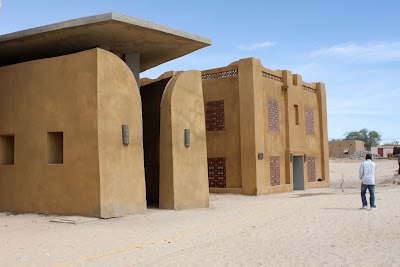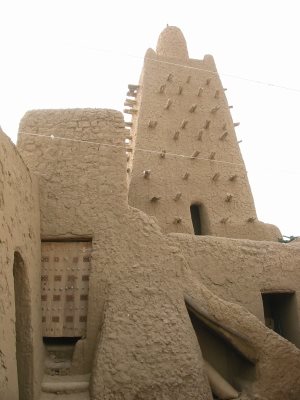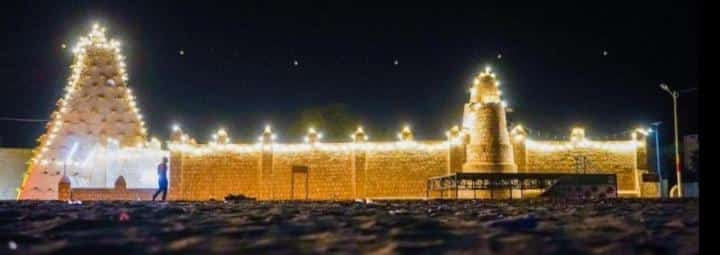Palace of Ahmed Baba (قصر أحمد بابا)
Overview
The Palace of Ahmed Baba, nestled in the enchanting and historic city of Timbuktu in Mali's Tombouctou Region, is a remarkable treasure of cultural and historical significance. Set against the mesmerizing backdrop of the Sahara Desert, this architectural gem stands as a testament to the golden age of Islamic culture and scholarship in West Africa.
Constructed in honor of Ahmed Baba, one of Timbuktu's most revered scholars, the palace embodies the intellectual vitality that once flourished in this ancient city. Born in 1556, Ahmed Baba was not only a leading scholar but also an influential jurist and prolific author of numerous works on Islamic law and theology. His contributions were so impactful that he is often hailed as the 'grandfather' of Sankore University, one of the earliest centers of higher learning in the world.
As visitors step into the Palace of Ahmed Baba, they are immediately enchanted by its traditional Sahelian architectural style. Constructed from sun-baked mud bricks, the palace harmonizes beautifully with Timbuktu’s iconic landscape. The intricate wooden doors and windows exemplify local craftsmanship, offering a glimpse into the region’s rich artisanal heritage.
One of the palace's most captivating features is its extensive historical library. This repository once housed thousands of manuscripts spanning a wide array of subjects, from astronomy and poetry to law and medicine, predominantly dating from the 14th to the 16th centuries. During its peak, Timbuktu was a thriving hub of knowledge, attracting scholars and students from across the Islamic world. While many manuscripts have been moved to safer locations due to conflicts and preservation efforts, the library retains a rich collection that provides visitors with insights into the intellectual legacy of Ahmed Baba and his contemporaries.
The palace museum is another highlight, offering an immersive experience into Ahmed Baba's life and the broader cultural achievements of Timbuktu. Exhibits showcase not only his scholarly works but also artifacts such as ancient calligraphy tools, original manuscript pages, and personal items belonging to Ahmed Baba. Each exhibit narrates its own story, enriching the understanding of this dynamic historical figure.
Beyond its historical and educational offerings, the Palace of Ahmed Baba also hosts periodic cultural events. During these gatherings, visitors can enjoy traditional Malian music performances, storytelling sessions, and poetry readings, all aimed at celebrating and reviving Timbuktu's cultural traditions. These events offer a unique opportunity for tourists to engage more deeply with the local culture and history.
The significance of the Palace of Ahmed Baba transcends its physical structure; it symbolizes the resilience of Timbuktu, a city that has withstood numerous threats, from colonial conquests to modern conflicts. Despite these challenges, the city and its iconic landmarks, like the palace, continue to shine as beacons of cultural heritage and historical endurance.
For those planning a visit, guided tours are available that are both educational and inspiring. Knowledgeable guides share detailed narratives about Ahmed Baba's life, the architectural significance of the palace, and the larger history of Timbuktu. These tours present an invaluable opportunity for tourists to connect with the rich historical essence of the site.
Whether you're a history buff, a cultural explorer, or just a curious traveler, the Palace of Ahmed Baba in Timbuktu promises a deeply enriching experience. It invites you to step back in time and walk in the footsteps of one of Africa's most esteemed scholars, providing a unique window into a past that has left an indelible mark on the world.
In summary, the Palace of Ahmed Baba is not just a monument to a significant individual; it is a symbol of a golden era of knowledge and learning that once illuminated the sands of the Sahara. It is a must-visit destination for anyone interested in the rich, intertwined tapestry of history, culture, and education that Timbuktu so beautifully embodies.





